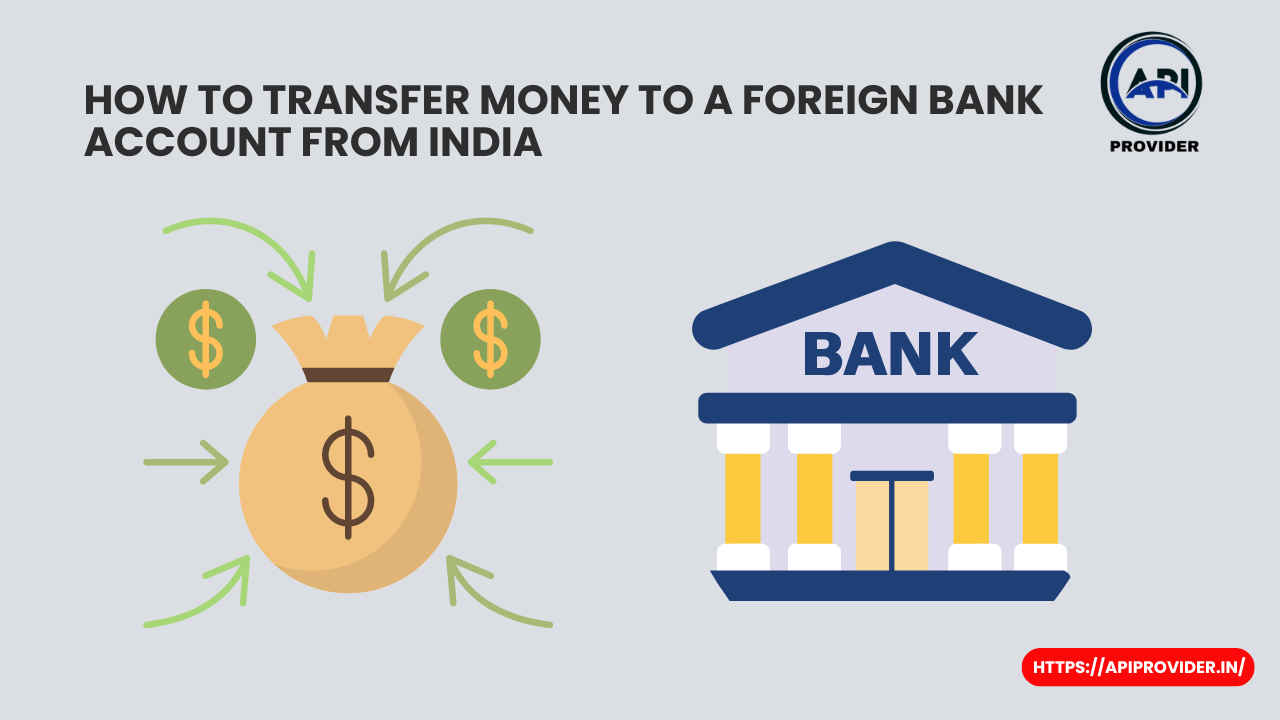How to Transfer Money to a Foreign Bank Account from India: Transferring money to a foreign bank account from India can seem like a complex process, but it doesn’t have to be. Whether you are supporting your family, paying for education, or conducting business, understanding the steps and options available will ensure a smooth and cost-effective transfer.

Why Transfer Money Internationally?
Transferring money internationally is essential for several reasons:
- Supporting family members abroad
- Paying for education
- Making business payments
- Buying property
Regardless of the reason, knowing the right methods and tools to use can save you time and money.
Key Factors to Consider
Before making an international money transfer, consider the following factors:
- Exchange Rates: The rate at which your money will be converted into the foreign currency.
- Transfer Fees: Charges imposed by banks and transfer services.
- Transfer Time: The time it takes for the money to reach the recipient’s bank account.
- Security: Ensuring the transaction is secure and your money reaches the intended recipient.
Read Also.
- Best Payment Gateway for Small Businesses in India: Focusing on the Best QR Code Service Provider
- Best QR Code Service Provider for Your Payment Gateway Business: Empowering Seamless Transactions with API Providers
Methods to Transfer Money to a Foreign Bank Account
1. Bank Transfers
Banks offer reliable and secure ways to transfer money internationally. Here’s how you can do it:
Step-by-Step Process:
- Visit Your Bank: Go to your bank’s branch or use online banking services.
- Provide Details: Give the recipient’s bank account details, including the SWIFT/BIC code.
- Choose the Amount: Enter the amount you wish to transfer.
- Confirm the Transfer: Review the details and confirm the transfer.
Pros:
- Secure and reliable.
- Direct transfers to the recipient’s bank account.
Cons:
- Higher fees compared to other methods.
- Slower transfer times (3-5 business days).
2. Online Money Transfer Services
Services like TransferWise (now Wise), Western Union, and PayPal offer faster and sometimes cheaper alternatives to bank transfers.
Step-by-Step Process:
- Create an Account: Sign up on the transfer service’s website or app.
- Enter Transfer Details: Provide the recipient’s bank account details.
- Pay for the Transfer: Use your bank account, debit, or credit card to fund the transfer.
- Confirm the Transfer: Review and confirm the details.
Pros:
- Competitive exchange rates.
- Faster transfers (same day or next day).
Cons:
- Transfer fees vary by service.
- Limited to certain countries.
3. Foreign Currency Demand Drafts
A demand draft is a secure way to send money abroad, especially for educational or business purposes.
Step-by-Step Process:
- Visit Your Bank: Request a demand draft in the foreign currency.
- Provide Recipient Details: Give the recipient’s name and bank details.
- Make Payment: Pay the amount plus any fees.
- Send the Draft: Mail the draft to the recipient.
Pros:
- Secure and non-cancellable.
- Useful for sending large sums.
Cons:
- Slower process (mailing time).
- Bank fees apply.
4. Wire Transfers
Wire transfers are a fast way to send money internationally through a network of banks or transfer agencies.
Step-by-Step Process:
- Visit Your Bank: Request a wire transfer form.
- Provide Transfer Details: Enter the recipient’s bank account information and SWIFT/BIC code.
- Submit the Form: Review the details and submit the form along with the transfer amount and fees.
Pros:
- Fast and reliable.
- Suitable for large transfers.
Cons:
- Higher fees.
- Exchange rate margins.
Table: Comparison of Transfer Methods
| Method | Speed | Cost | Best For |
|---|---|---|---|
| Bank Transfers | 3-5 Business Days | High Fees | Large, secure transfers |
| Online Money Transfer Services | Same Day/Next Day | Competitive Fees | Quick, cost-effective transfers |
| Foreign Currency Demand Drafts | Several Days | Moderate Fees | Educational or business payments |
| Wire Transfers | Same Day | High Fees | Fast, large transfers |
Tips for Transferring Money
- Compare Exchange Rates: Use comparison tools to find the best exchange rates.
- Check Fees: Be aware of transfer fees and hidden charges.
- Use Secure Platforms: Ensure the service you use is reputable and secure.
- Plan Ahead: Avoid last-minute transfers to get better rates and lower fees.
Conclusion
Transferring money to a foreign bank account from India doesn’t have to be a daunting task. By understanding the different methods available, comparing costs, and following the steps outlined, you can ensure your money reaches its destination safely and cost-effectively.
FAQs
What are the best methods to transfer money internationally from India?
The best methods include bank transfers, online money transfer services (like Wise and PayPal), foreign currency demand drafts, and wire transfers. Each method has its pros and cons, depending on your specific needs.
How can I get the best exchange rate?
Compare exchange rates offered by different banks and transfer services. Online platforms often provide more competitive rates than traditional banks.
Are there any hidden fees when transferring money?
Yes, some services may have hidden fees such as processing fees, currency conversion fees, or receiving bank charges. Always check the fee structure before making a transfer.
How long does it take to transfer money internationally?
Transfer times vary by method: bank transfers typically take 3-5 business days, online services can be same day or next day, and wire transfers are usually completed within a day.
Is it safe to transfer money online?
Yes, it is safe if you use reputable and secure platforms. Ensure the service provider has good reviews and uses encryption to protect your financial information.
